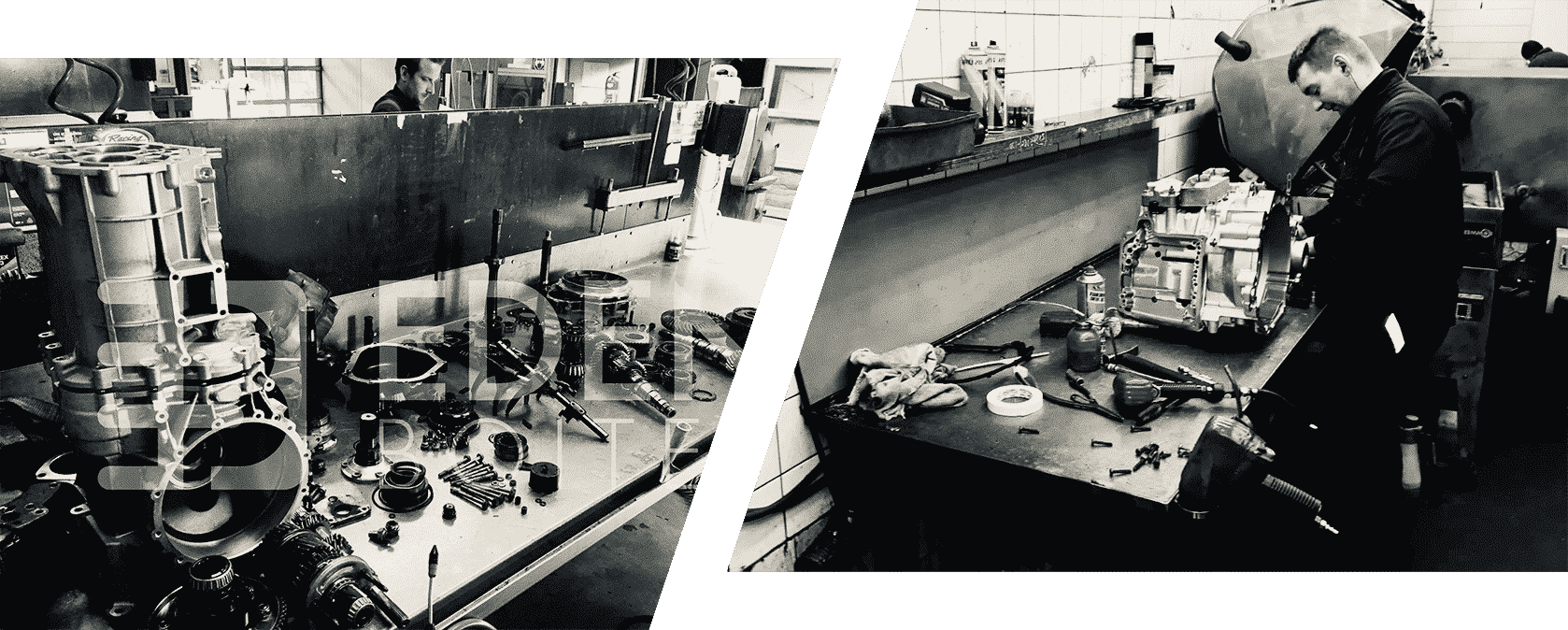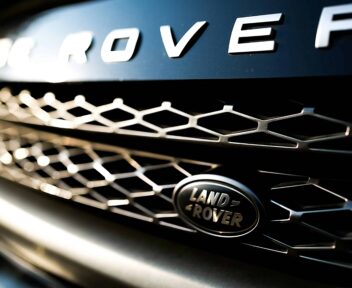How to repair a gearbox?
The gearbox is one of the main components that enable your vehicle to move forward and backward. Its task is to reduce or increase the driving force to adapt it to the speed of the wheels. It is the gearbox that transfers the power from the engine to the wheels so that the car can move. However, many faults can affect the how the gearbox works. It is therefore essential to plan its repair as soon as possible.
Impeccable service
Boite de vitesses cassée ? Nous vous aidons à trouver et commander votre modèle
How do I know when a repair is needed?
The gearbox is designed to last as long as your car, at least under normal use. It should therefore last at least 300,000 km. In practice, various elements can reduce this remarkable life span:
- an aggressive driving style;
- neglect of gearbox checks and maintenance (checking fluid levels, oil filling, oil changes, etc.);
- shocks ;
- the use of excessive force when operating the gear lever;
- a malfunction of the mechatronic system;
- the state of the roads ;
- etc.
Gearbox problems rarely go unnoticed. In fact, there are many signs that help you to identify the presence of a fault. If you pay attention, you can easily spot them. When you hear a continuous whirring noise, it is usually because the bearings on the drive shafts are in poor condition. There is a risk that they will break and cause the destruction of the entire transmission. If it becomes impossible to engage the gear lever in one or more positions, it is likely that the gear selection system is blocked or the linkage has failed. Lack of oil and oil contamination may also be the cause. Do you hear cracking noises when shifting gears and/or gear engagement becomes difficult? This may be a sign that the synchros are worn or that the gears are not sufficiently lubricated, which prevents them from meshing with the sprockets.
Symptoms can also vary depending on the type of gearbox. In most cases, failures of a manual (or mechanical) BV will manifest themselves as difficulty shifting gears or a feeling that the gearbox is hard, making it feel like it is resisting your input. It may also be that gears jump or the transmission system becomes abnormally noisy. In other cases, there may be oil leaks under the gearbox housing.
With automatic gearboxes, you should be alert if you notice any jerking when starting, shifting and/or accelerating. Similarly, it is advisable to have the BVA checked quickly if you hear grunting or squeaking noises that seem to come from your gearbox. Difficulty downshifting and power loss are also warning signs to be aware of.
As you can imagine, these are not the only signs of malfunction. If they occur or if you notice any other form of malfunction, make an appointment with a qualified repairer immediately. Driving a car with a sub-optimal BV is a risk for passengers and other road users. Add to this the fact that minor faults can be amplified and spread to other components of the gearbox, resulting in more serious and difficult to repair failures.
How to identify the right type of gearbox?
The gearbox can be considered the core of the transmission system as it links your wheels to the engine. This function is common to all transmissions. However, there are several types of mechanical gearboxes (BVM) and BVA.
The manual gearbox is the most common on the European continent. It incorporates a series of gears that allow you to select a gear by operating the gear lever while pressing the clutch pedal. This means that the driver's intervention is required each time a gear needs to be changed. The 5-speed manual gearbox and 6-speed gearboxes are in the majority on the car market. However, it is possible for your vehicle to have up to 7 manual gears.

All BVMs work on the same principle. Theinput shaft, also known as the main or primary shaft, is connected to the engine via the clutch system. It transmits its rotation to theintermediate shaft which in turn drives thesecondary shaft. The latter carries the gears connected to the transmission ratios. When you operate your gear lever, the linkage transmits the command to the inside of the transmission. A fork moves and causes the shifter to slide until the gear corresponding to the selected gear ratio locks onto the secondary shaft. The shaft, which is in continuous motion, drives the wheels to move your car forward or backward.
Extremely popular in the American and Asian markets, automatic gearboxes are becoming increasingly popular in Europe. Manufacturers generally offer them as an option, but some models come with an automatic transmission as standard. They differ from manual transmissions in that the driver does not need to intervene and there is no clutch pedal. The number of gears is also higher. Although the standard seems to be around 6 automatic gears, the BVA can have up to 9 or 6 gears.
A gear lever is also associated with the overall mechanism of automatic gearboxes, but as you might expect, its function is not to engage a gear. Each position in the corridor defines a driving mode on which the system will base the choice of gears it selects. The standard positions are as follows:
- P = Parking. The wheels of your car are blocked when you activate this mode.
- R = Reverse. This is the position to select before reversing.
- N = Neutral. The vehicle is in neutral. Its wheels may well be turning.
- D = Drive. The gearbox is in forward mode. The system analyses the driving conditions and selects the gears without your intervention.
- 1 = Your vehicle is only in first gear.
- 2 = The automatic gearbox alternates between first and second gear.
The additional mode S (Sport) is present on many cars designed for sporty driving. The W (Winter) mode is useful when the wheels spin. Starting on ice and other slippery surfaces is done in second gear. Mode 3 is available on some vehicles. It allows the transmission system to alternate between the first three gears.
The sequential gearbox is not a type of gearbox as such. Rather, it is an additional function inherited from Formula 1 transmissions. Like the automatic transmission, it has no clutch pedal. Instead, the driver must select controls via a paddle on the steering wheel or by operating a gear lever.
The robotised gearbox is a hybrid version. It is basically a mechanical gearbox. However, its design also includes an automated management system. This means you can switch between manual and automatic gear selection.

BVs are not interchangeable as each type of gearbox is manufactured to a specific architecture. In addition, car manufacturers tend to evolve transmissions as new generations of a model appear. It is therefore essential to know which type of gearbox is fitted to your vehicle and which reference corresponds to it. The part number takes the form of a code stamped on the casing. In some cases, the manufacturer may put it on a label. This series of numbers and/or letters will allow you to formally identify the components that are compatible with your gearbox for repair purposes. This is also the same reference that must be taken into account if replacement is necessary.
How is the gearbox repaired?
You have noted the signs of malfunctioning, which is an excellent start. You should then contact a professional (local craftsman, dealer's partner workshop, etc.) and clearly explain the faults you have noticed. However, not all faults justify replacing the gearbox. Sometimes it is possible to repair the gearbox, which is determined by the level of wear of the components, the extent of the breakage and other characteristics of the problem encountered. In other words, diagnosing the gear box is the first step to a quality repair.
It is important to know that the duration of the diagnosis is random. It may take 5 minutes for the mechanic to identify the cause of the malfunction, or it may take a few days before he can give you a reliable diagnosis. This is because troubleshooting is complex. There may be several components involved and in some cases, functional tests and visual inspections reveal nothing. In such cases, the box has to be dismantled.
Not everyone can dismantle it. The central console must be removed, the gear lever removed, the bolts holding the transmission shafts in place unscrewed, the gear sensors disconnected, etc. The steps to follow depend on the model of gearbox. The tools used during removal must then be carefully selected to allow the parts to be disassembled without damaging anything, while controlling the time required for the operation.
After the gearbox has been removed, the craftsman can carry out a more detailed inspection to look for signs of wear and deterioration likely to cause the anomalies observed. He will take the opportunity to identify elements that have probably gone unnoticed but which could, in the long term, damage the gearbox.
When it is possible to repair the gearbox, the mechanic undertakes the overhaul. Changing the oil is usually part of the process, as the particles in the oil gradually clog it up and there is a risk of further breakdowns later on. It is therefore a precaution that applies mainly to BVAs.
In case of critical failures, he will choose to replace the box with a second-hand model or a standard exchange.
The assembly of a BVM is tedious. The gear train and axle must be repositioned, the bearings fixed, the transmission shafts positioned, etc. The seals and screws to be used vary and there is no question of making a mistake, otherwise the efficiency of the gearbox will be impaired. Once the unit is correctly reassembled, the housing is filled with new oil. The mechanic shifts the gears one by one to be sure that the malfunctions have completely disappeared.
In the case of an automatic gearbox, it is not enough to follow the removal and installation steps carefully. In addition to the necessary checks and tests, reprogramming of the system is usually required. There is no room for error.
Please note that the above steps are provided as a guide to help you understand the process of repair or replacement. You should not attempt to carry them out. It is essential that you seek professional advice to determine whether the procedures outlined above are suitable or whether it is necessary to adjust the method of handling according to the constraints imposed by the condition and properties of your gearbox.
You should never hesitate to ask for several quotes before embarking on a repair. Serious offers are free of obligation, which gives you the freedom to entrust the repair of your gearbox to the professional whose offer suits you best. On the other hand, you don't have to delegate thepurchase of a gearbox to a professional. It is even better to do it yourself, so that you can combine the best prices with the best quality.
Where and how to buy a quality gearbox?
The mechanic has confirmed that there is no better option than to replace the gearbox. This is quite a big investment in the sense that it is not a wearing part in the true sense. Replacements are rare and the gearbox should perform as long as you use the car (except in exceptional circumstances as mentioned above).
It is impossible to give you an exact price for such an operation. While the labour cost is freely determined by the garage, the cost of the replacement product depends on its characteristics. For this purpose, you should only trust gearbox specialists who offer products that are compatible with all types, models and makes of vehicle. EDEN BOITES has over 12,000 products in stock and offers you general terms and conditions of sale and guarantee advantageous prices.
Three ranges of gearboxes are available. Used gearboxes are the cheapest. Despite previous use, they are functional and reliable because our experts have checked them individually. Standard exchange gearboxes are more expensive, but they are also more efficient, which means a longer warranty period compared to used models. A guarantee is offered for each of the products we sell. The prices are also displayed in full transparency. If you order a product from stock, the customised quote will mainly be used to inform you about shipping costs and order details.
When the reference corresponding to your BVM or BVA is not available, we can offer you a third range, namely the reconditioned gearbox. Your garage will drain the faulty product before removing it. We then send professional transporters to collect the gearbox. Once it arrives at our workshop, our technicians set about rebuilding it. More specifically, the gearbox is restored to the technical characteristics of a new product. Reconditioning is carried out on the basis of an estimate.
We make it a point of honour to select our partners according to very high standards. The transporters are no exception to this rule. They cover a vast area which enables them to deliver gearboxes to addresses in France and other European countries. The security of your parcel is guaranteed and we ensure that waiting times are as short as possible so that the garage can quickly deal with the repair of your gearbox.




